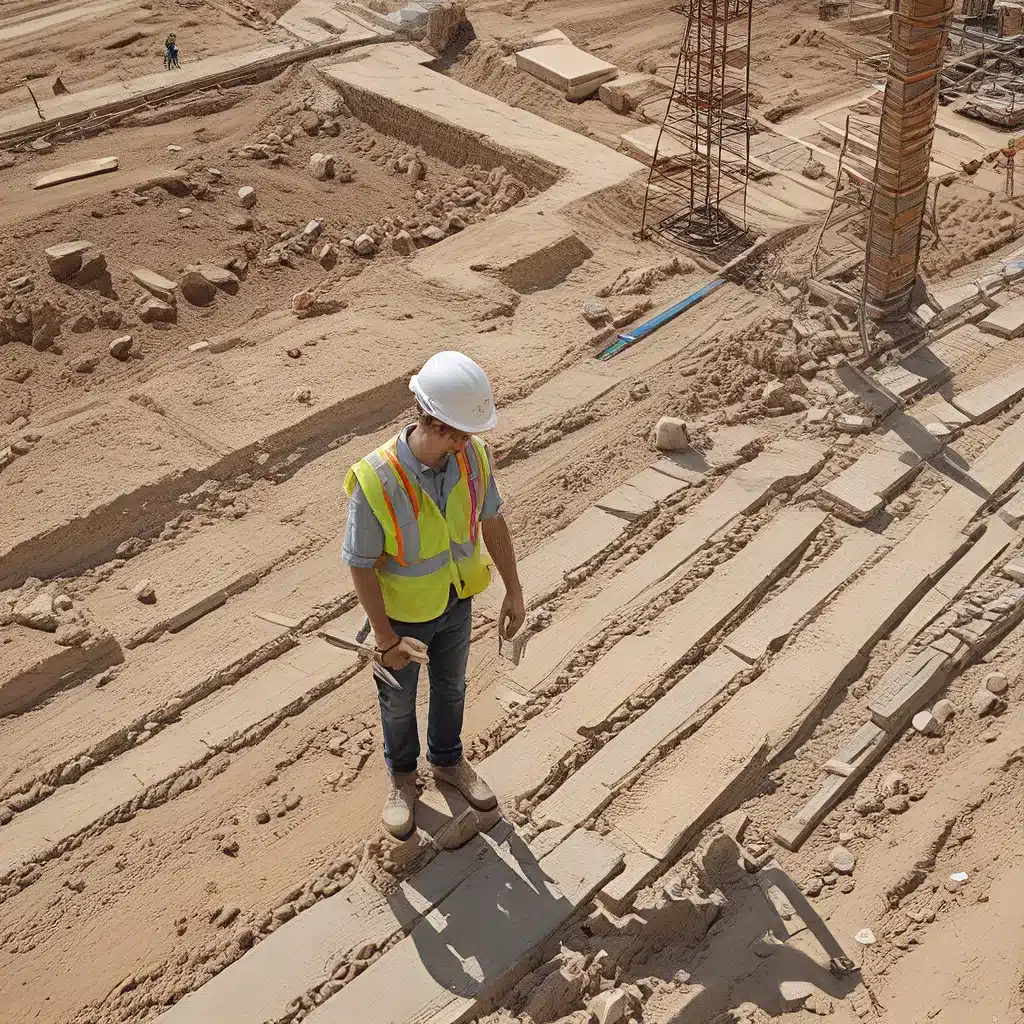
The Storm is Coming, and We Must Adapt
Imagine yourself standing on the edge of a cliff, overlooking the vast expanse of the construction industry. The winds of change are howling, and the waves of disruption are crashing against the familiar shoreline. It’s time to brace ourselves, my friends, because the future is here, and it’s not waiting for us to catch up.
In this ever-evolving business landscape, disruptive technologies and innovative business models are reshaping industries, challenging traditional norms, and creating new opportunities for growth and success. As general contractors and construction professionals, we must embrace these transformative forces and harness their potential if we want to stay competitive and relevant in the digital age.
Disruption: The Catalyst for Transformation
Disruptive technologies are the innovations that fundamentally alter the way businesses operate, often replacing traditional methods and systems with more efficient, cost-effective, and scalable alternatives. These groundbreaking concepts challenge the status quo, forcing companies to adapt or risk becoming obsolete.
One of the most notable examples of disruptive technology is Blockchain, which has revolutionized data security and transparency in industries like financial services, supply chain management, and beyond. Another powerful disruptor is Artificial Intelligence, driving advancements in automation, customer service, and data analytics across various sectors.
Disruption is, in fact, a catalyst for innovation, prompting companies to rethink their strategies, products, and services. By challenging conventional approaches, businesses are encouraged to seek creative solutions that meet the evolving demands and preferences of their customers. This constant drive for improvement fosters a culture of innovation and continuous growth – a mindset that we, as construction professionals, must embrace.
Embracing the Disrupted Future
Traditional business models in the construction industry have long focused on stability and incremental improvements. However, disruptive business models prioritize agility and adaptability. These forward-thinking companies are more willing to take risks and embrace uncertainty, aiming for significant breakthroughs rather than gradual progress.
This fundamental shift in mindset allows disruptive construction companies to capture untapped markets and gain a competitive edge. By understanding consumer behavior, preferences, and pain points, they can identify unmet needs that innovative technologies could address. Additionally, by closely monitoring industry trends and emerging technologies, these companies can stay ahead of the curve and develop unique value propositions.
Cultivating a Culture of Innovation
Fostering a culture of innovation within our construction companies is no easy feat, but it’s a necessity if we want to thrive in the face of disruption. Empowering employees to think creatively, take calculated risks, and share their ideas openly is crucial. Encouraging cross-functional collaboration and providing resources for experimentation can yield groundbreaking results.
Adopting agile business strategies, where we can respond quickly to market changes and customer demands, is also key. By embracing flexibility and adaptability, we can pivot our models to leverage disruptive technologies effectively. But let’s not forget that change can be met with resistance, both from within our organizations and from our stakeholders. Transparent communication, education, and involving all parties in the decision-making process can help mitigate this resistance and foster buy-in.
Navigating the Unpredictable
Disruptive environments can be unpredictable, requiring us to prepare for various scenarios. Scenario planning, risk assessments, and contingency strategies can help us navigate the uncertainty and make informed decisions. It’s not enough to simply react to the changes; we must proactively anticipate and plan for the future.
One inspiring example of a company that has embraced disruption is Netflix. By offering an online streaming platform, Netflix disrupted the traditional cable TV industry, leveraging data analytics to personalize content recommendations and producing original shows. This innovative approach transformed the entertainment market and cemented Netflix’s position as a dominant force.
Another industry disruptor is Tesla, whose electric vehicles have challenged the automotive industry’s status quo. Tesla’s innovative approach to design, performance, and battery technology has transformed the perception of electric cars worldwide, paving the way for a more sustainable future.
Balancing Innovation and Sustainability
While disruptive technologies offer immense benefits, we must also consider their environmental impact. As construction professionals, we have a responsibility to our planet and the communities we serve. Integrating sustainable practices into our innovation strategy is crucial for long-term success.
By aligning our goals with the broader vision of a sustainable world, we can position ourselves as industry leaders and contribute to a greener future. This balance between innovation and sustainability is not always easy to strike, but it’s a necessary challenge we must embrace.
The Horizon Beckons
The future holds numerous emerging technologies, such as quantum computing, 5G, and biotechnology, with the potential to redefine the construction industry. Staying informed and adaptable is vital if we want to harness the power of these upcoming disruptions.
As we stand on the edge of this precipice, the storm clouds of change loom large. But I believe that if we embrace disruption, foster a culture of innovation, and balance our ambitions with sustainability, we can not only weather the storm but emerge as industry leaders. The future belongs to those who are willing to take the leap and redefine the landscape of construction.
So, my friends, let us dive headfirst into the waves of disruption, for the alternative is to be swept away by the tides of irrelevance. The time for action is now – let’s embrace the future and shape the construction industry of tomorrow.
Related posts:
No related posts.




